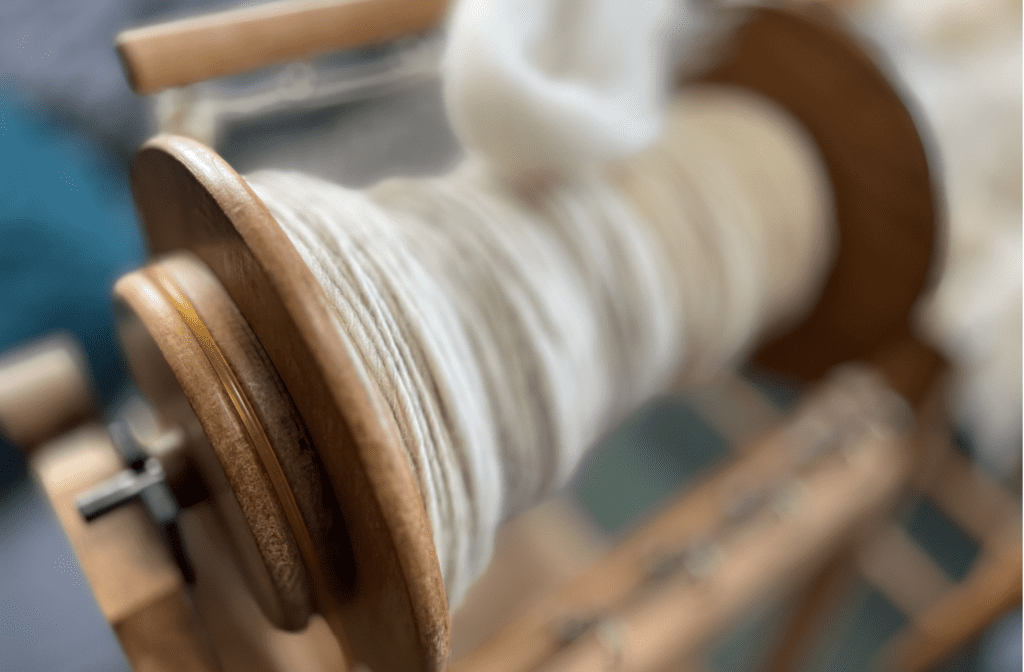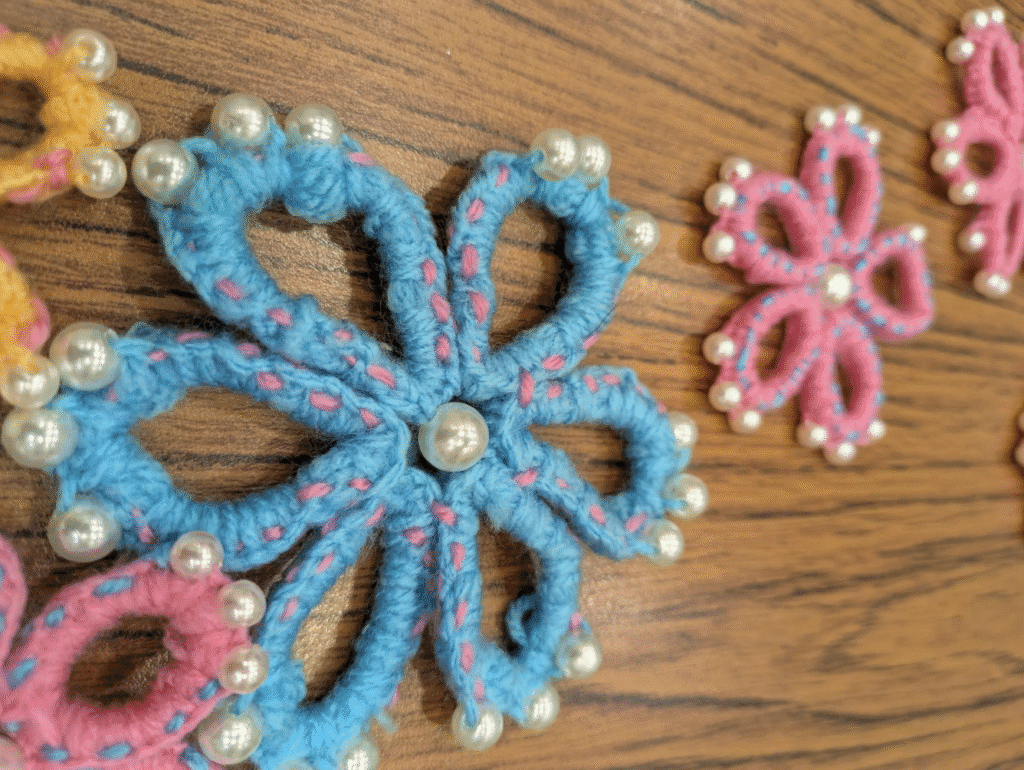
When spinning wool, we often talk about 2 different techniques – worsted and woollen. The difference between worsted and woollen spinning techniques lies mainly in fiber preparation, yarn structure, and final fabric properties.

Back on the horse again after hip replacement surgery mid December. Out for a hack last Thursday evening with my sister, and not an ache or pain!

As a member of a group undertaking the University of Ulster green sustainability in tourism qualification, we had an away day to the Cuilcagh Lakelands Geopark in Enniskillen.

Thanks to Karen for her expert felting tuition on our last Craft Club meeting. Photos below, plus a selection of what other club members were working on.

Some photos from my last two Ards and North Down craft classed in the Ards Arts centre.
We made Celtic Braids, using lucets to make the braids, which were then attached to linen squares to make wall hangings.
On the second evening we made pretty, beaded flowers from wool.

I was asked to host a crafty birthday party a few days ago, and the ladies and gentleman participants agreed to have a go at peg loom weaving. We used rovings, washed and dyed fleece, and various balls of yarn.
With a little time left, between morning coffee, some, buns and cake, later helpings of the same, and sandwiches and birthday cake at lunchtime, we had a go at learning to use a lucet – to great effect.

It is European Wool day today.
Here is a short video of the batt being carded on my electric Brother Drum Carder.

It is European Wool day today.
So to celebrate I will be spinning some more of this – some texel X fleece that I washed, dyed, picked and carded dyed.

The Estonian Braid, also known as the Vikkel or Lateral Braid, is a traditional knitting technique from Eastern Europe. It creates a horizontal chain of “V” stitches across the fabric, often used as a decorative border on hats, gloves, mittens, sweaters, or other garments. This technique is valued for its ability to add both structure and visual interest to knitting projects.

Discover the art of lucet braiding, an ancient craft with Viking roots that found its way into Celtic culture. This three-hour workshop teaches you to create beautiful round braids for jewellery or decorative cordage using a simple tool rich in history. Explore your creativity with various yarns, beads, and charms. Kiri Cottage is set near Strangford Lough, enjoy views of Scrabo Tower and the Mournes while crafting. Savour homemade refreshments in a relaxed atmosphere.










